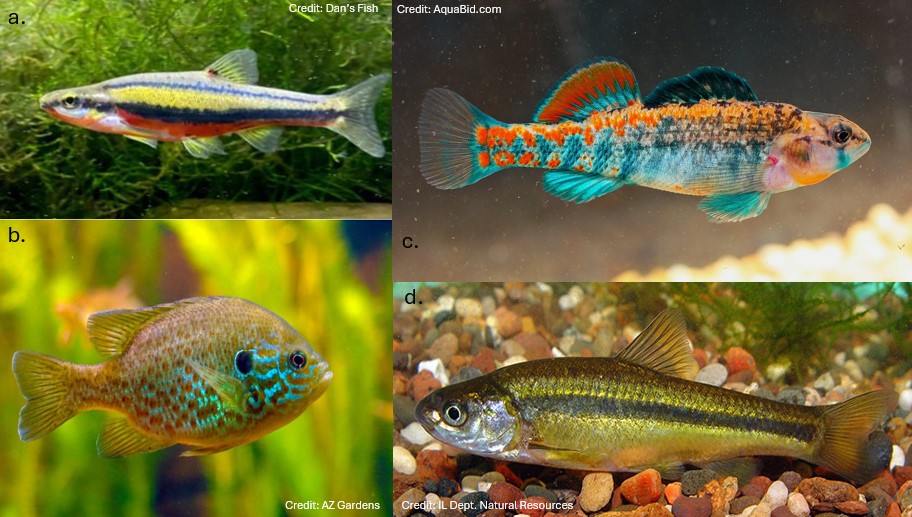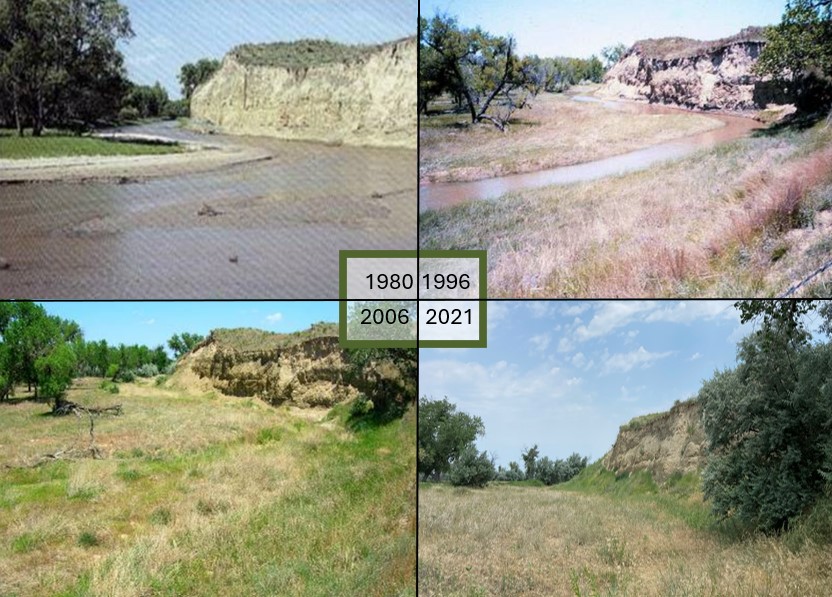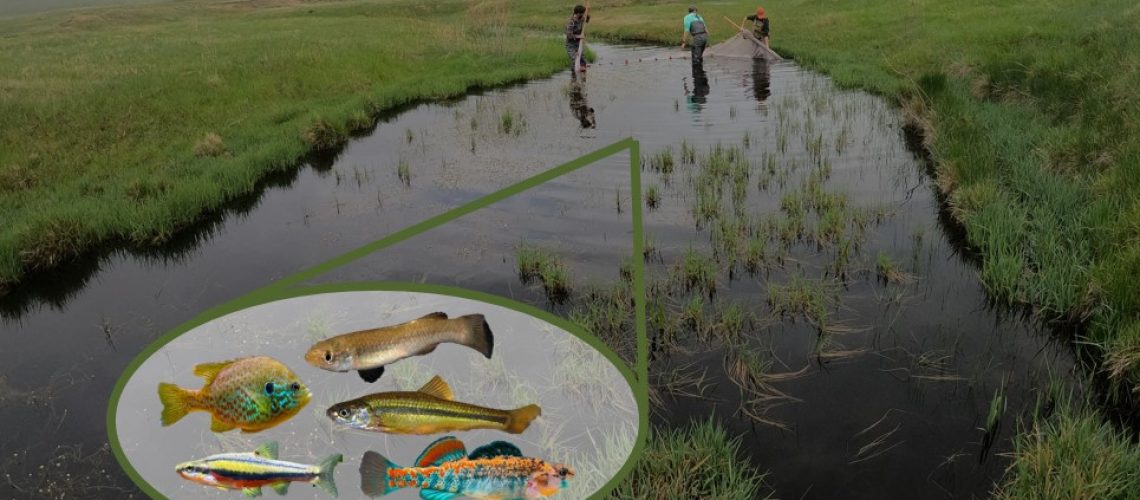Guest Post by Samuel Lewis, 2023-2024 Sustainability Leadership Fellow, and Ph.D. Student in the Department of Fish, Wildlife, and Conservation Biology at Colorado State University
Unexpected Parallels
While the Great Plains might not immediately conjure images of your ideal vacation, you’d be surprised to find they’re not too different from the sun-soaked shores of the tropics. In the vast expanse of the Great Plains, the landscape unfolds like a canvas of endless green, stretching as far as the eye can see. Here, instead of a sea of blue, you find yourself immersed in a sea of swaying grasses and wildflowers, their verdant hues dancing in the breeze. The calls of whooping cranes echo across the horizon, a symphony of sound that replaces the cries of gulls. And when the rushing spring flows cascade down the rivers, they mirror the ebb and flow of tides, washing away the tracks of a piping plover just as the tide would come to wash away the tracks of your favorite shorebird. In this serene and captivating landscape, nature’s rhythms unfold in harmony, weaving a tapestry of life that captivates and inspires.
The similarities do not stop there though as nestled among the rivers of the Great Plains, reflecting the vastness of the sky above, sits pool after tranquil pool. In these seemingly ordinary waters, an extraordinary display of life unfolds. Swirling colors dance beneath the surface, reminiscent of vibrant coral reefs. But these hues don’t belong to exotic marine life; they belong to the Plains Fish, a diverse array of over 100 species1 that call the Great Plains their home.

Let’s dive deeper into this remarkable world and explore the captivating colors of some iconic Plains Fish species. Take the Southern Redbelly Dace (Chrosomus erythrogaster), for instance, with its racing reds that ignite the water like flickering flames in the sunlight. Their scales shimmer with iridescent brilliance, reflecting the warm glow of the sun overhead. Then there’s the Pumpkinseed (Lepomis gibbosus), adorned with vibrant turquoises and oranges that seem to glow with an inner light, creating a mesmerizing mosaic that captivates the eye. We have the Brassy Minnow (Hybognathus hankinsoni), a modest yet captivating inhabitant of the Plains waters. With its subtle gold sheen that glimmers under the sunlight, this diminutive fish adds a touch of radiance to the meandering streams it inhabits. And when the sunlight catches them just right, they appear to shimmer and sparkle like liquid gold. Finally, let’s not forget the Orangethroat Darter (Etheostoma spectabile), with its namesake orange throat that glows like a fiery ember against the backdrop of the riverbed. Their bodies are a canvas of intricate patterns and bold contrasts. As they navigate the currents, their movements are swift and purposeful, a testament to their adaptability and resilience in the face of adversity.
Thriving in Tough Terrain
But it’s not just their captivating appearance that distinguishes Plains Fish; it’s their remarkable resilience and adaptability to the diverse range of environmental conditions found throughout the Great Plains. These hardy creatures showcase an extraordinary tolerance to fluctuating temperatures and dynamic habitats2. From scorching summer days to freezing winter nights, Plains Fish have evolved to thrive in environments where extreme conditions are the norm.
Some species demonstrate remarkable flexibility in their life history traits which are the patterns of survival and reproduction events during the life of an organism. This is most evident in their diverse reproductive behaviors as they adapt to seasonal variations in water levels and flow patterns. While some rely on the swift currents to transport their eggs downstream during spring floods, others seek refuge in backwater pools and eddies formed by high flows, ensuring the safety of their offspring in turbulent times. This intricate dance of adaptation and resilience underscores the importance of movement and flexibility in the survival of Plains Fish, allowing them to persist and thrive amidst the challenges of their dynamic environment.
Beyond Beauty
So why should we care about conserving Plains Fish? Beyond their aesthetic appeal, these species play crucial roles as bioindicators of ecosystem health5. By monitoring the populations and behaviors of Plains Fish, scientists can gain valuable insights into the overall condition of freshwater habitats and identify potential environmental threats. In the face of fluctuating water levels, temperature extremes, and human-induced impacts such as habitat degradation and pollution, having multiple species that perform similar ecological functions ensures that vital ecosystem processes continue to operate even in the absence of one or more species6.
For example, if one species of Plains Fish experiences a decline in population due to habitat loss or pollution, other species with similar feeding habits or habitat preferences may be able to compensate for the loss, maintaining the overall stability and productivity of the ecosystem. This redundancy in ecological function enhances the resilience of freshwater ecosystems to environmental change and helps to mitigate the potential impacts of disturbances on ecosystem health and stability.
Furthermore, the presence of multiple species within Plains Fish communities contributes to overall biodiversity, which is essential for maintaining ecosystem resilience and adaptive capacity. By supporting a diverse array of species with different life history traits and ecological niches, Plains Fish communities are better equipped to recover from and withstand environmental perturbations, ensuring the long-term health and sustainability of freshwater ecosystems in the Great Plains and beyond.
Troubled Waters
Despite their remarkable adaptations, Plains Fish face numerous threats in their native habitats3. One of the most pressing challenges stems from human activities, particularly intensive irrigation practices in the Great Plains. The extraction of water from the High Plains Ogallala Aquifer through deep wells has led to the depletion of groundwater levels, resulting in diminished river flows, and altered ecosystems. In these regions where evaporation rates surpass precipitation, the consequences can be particularly severe.

Furthermore, the pressures on agricultural families to sell their water rights to burgeoning urban areas4 add another layer of complexity to the challenges faced by Plains Fish. As water is diverted away from agricultural use, the natural return flows that replenish river systems are disrupted, altering the flow dynamics and habitats crucial for the survival of these fish species. This shift in water allocation not only affects the quantity of water available but also disrupts the ecological balance of freshwater ecosystems, further threatening the delicate equilibrium that Plains Fish rely on for their survival. As urbanization continues to encroach upon agricultural lands, finding sustainable solutions to manage water resources becomes increasingly urgent to safeguard the future of Plains Fish and the ecosystems they inhabit.
Collective Conservation Efforts
Plains Fish are anything but plain. Their vibrant colors, unique adaptations, and ecological significance make them invaluable treasures of the Great Plains. By recognizing the beauty and importance of these remarkable creatures, we can take meaningful steps towards conserving their habitats and ensuring a brighter future for freshwater ecosystems.
Now, you might be wondering, what can I do to help Plains Fish thrive? It’s simple: spread the word. By sharing the story of these colorful creatures with your friends, family, and community, you can raise awareness about the importance of protecting their habitats. The next time you find yourself longing to see some colorful fish, remember that you don’t have to venture far. The Fish of the Great Plains are waiting to be discovered, appreciated, and safeguarded for generations to come.
References
1: Lee, D. S., Gilbert, C. R., Hocutt, C. H., Jenkins, R. E., McAllister, D. E., & Stauffer Jr, J. R. (1980). Atlas of North American freshwater fishes (p. 854). North Carolina State Museum of natural history..
2: Fausch, K. D., & Bestgen, K. R. (1997). Ecology of fishes indigenous to the central and southwestern Great Plains. In Ecology and conservation of Great Plains vertebrates (pp. 131-166). New York, NY: Springer New York.
3: Worthington, T. A., Echelle, A. A., Perkin, J. S., Mollenhauer, R., Farless, N., Dyer, J. J., … & Brewer, S. K. (2018). The emblematic minnows of the North American Great Plains: a synthesis of threats and conservation opportunities. Fish and Fisheries, 19(2), 271-307.
4: Higgins, K. F., Naugle, D. E., & Forman, K. J. (2002). A case study of changing land use practices in the northern Great Plains, USA: an uncertain future for waterbird conservation. Waterbirds, 42-50.
5: Porter, C. M. (2000). Central Oklahoma bioassessment study: evaluation of stream health by using fish and macroinvertebrate communities as biological indicators. In Proceedings of the Oklahoma Academy of Science (pp. 61-70).
6: Biggs, C. R., Yeager, L. A., Bolser, D. G., Bonsell, C., Dichiera, A. M., Hou, Z., … & Erisman, B. E. (2020). Does functional redundancy affect ecological stability and resilience? A review and meta‐analysis. Ecosphere, 11(7), e03184.






